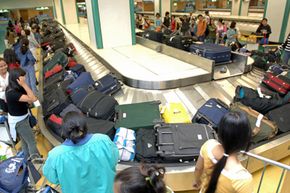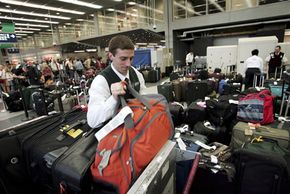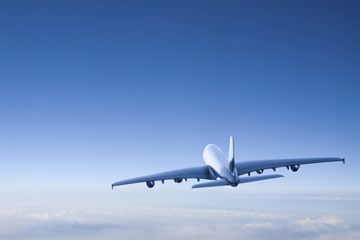Key Takeaways
- Most mishandled luggage is returned within 24 hours, but unclaimed bags eventually end up at the Unclaimed Baggage Center in Scottsboro, Alabama, where they are sold at reduced prices.
- Unique finds at the Unclaimed Baggage Center have included Egyptian artifacts, valuable jewelry and items like a space shuttle camera.
You've watched the luggage carousel spin around countless times. Your bag, however, has yet to show its generic, navy blue face. It's gone -- one of the many bags "mishandled" by airlines annually. And although most baggage is returned to passengers within 24 hours, some languishes in airports and warehouses before carriers declare it officially lost. But where does the truly unclaimed luggage go?
What happens to the wrinkle-proof suits, the much-regretted cameras and the occasional Egyptian artifact? They eventually end up in Scottsboro, Ala., at the Unclaimed Baggage Center, where they're sold to the public at bargain-basement prices.
Advertisement
Airport Image Gallery
The U.S. Department of Transportation reported that airlines mishandled 3.39 out of every 1,000 bags in 2011 [source: DOT]. Most carriers define a mishandled bag as delayed, lost, stolen or damaged. Passengers with delayed bags are relatively lucky: Their belongings are usually only a flight behind them. Even those with lost luggage usually see their bags again. Airlines spend a considerable amount of effort tracking down owners of unclaimed luggage -- they even use clues from inside the bag when the outer tags are gone. But some luggage, no matter how carefully the carrier tries to trace it, is irretrievably lost.
Airlines usually keep unclaimed luggage around the terminal where it was found for about five days before shipping it to a central warehouse. After about 60 days in storage, carriers donate the bags to charity or sell them to salvage.
The Unclaimed Baggage Center buys luggage from airlines with the contents site unseen. Clothing makes up about 60 percent of the millions of items that pass through the store annually. Cameras, electronics, sporting goods, jewelry, glasses, books and luggage help keep the constantly rotating shelves fully stocked. The Unclaimed Baggage Center founders, Doyle and Sue Owens, started their business by selling unclaimed Greyhound bus luggage in 1970. Now the store covers a city block and sells unclaimed cargo in addition to their staple of lost airline baggage.
So what makes people fly across the country to root through someone else's lost baggage? In the next section we'll learn about some unusual finds in Scottsboro and how you can avoid losing your own luggage.
Advertisement



